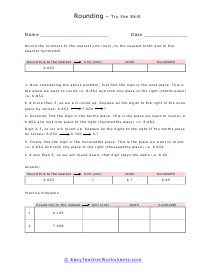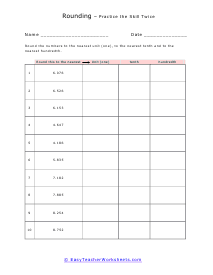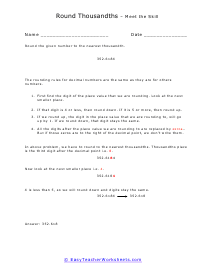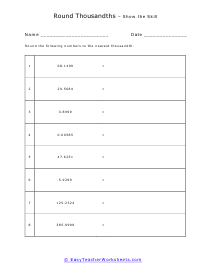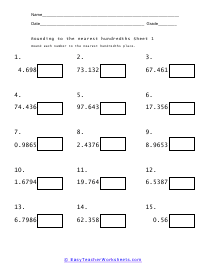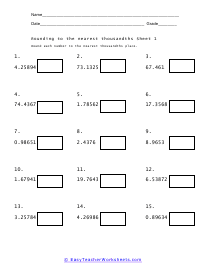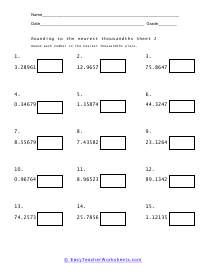Estimating is an essential part of mathematics and a beneficial tool in daily life. Learning how to estimate distance, lengths, and other amounts help us significantly in everyday measurements. Rounding off the numbers is a type of estimation. Rounding off decimals work the same as rounding off whole numbers. When rounding off decimals, we typically round off to a whole number or one or two decimal places. When we talk about rounding off decimals to the whole number, we focus on the numbers present on tenths and one's places. Round off the decimal place to the nearest numbers, increasing or dropping the decimal point. For example, 7.1 will round off to 7. We will drop the 0.1 decimal point. Similarly, 33.9 will round off to 34. we will move one decimal point up. The tip here is that if the decimal place greater than 5, we move one decimal point up. When the place value is less than 5, we move down one decimal point down. If there are more places, then drop them. For example, 21.816 will round off to 22. 2.134 will round off to 2. When we are rounding off the decimal to two places, we will focus on second and third decimal places. For example, 43.4344 will round off to 43. 43. 25.5674 will round off to 25.57.
Rounding a number up or down means to make the number simpler, while still keeping its value close to what it was. Though a "round number" is less accurate, it is easier to use. In these worksheets, students will practice rounding decimals. They will be given decimals with a variety of place values, and will round them to the nearest whole, tenth, hundredth, and thousandth. They will practice identifying an exact number, based on information provided about how it would be rounded, and its relationship to other numbers. They will use rounded numbers to estimate the answer to two decimal digits then find the exact answer. In some problems, students will be given visual cues indicating which place value the decimal should be rounded to. In others, students will round decimals to the nearest whole number. This set of worksheets contains step-by-step solutions to sample problems, both simple and more complex problems, a review, and a quiz. When finished with this set of worksheets, students will be able to recognize basic properties of a parabola by studying its equation. These worksheets explain how to round decimals to the nearest whole, tenth, hundredth, and thousandth. Sample problems are solved and practice problems are provided.









